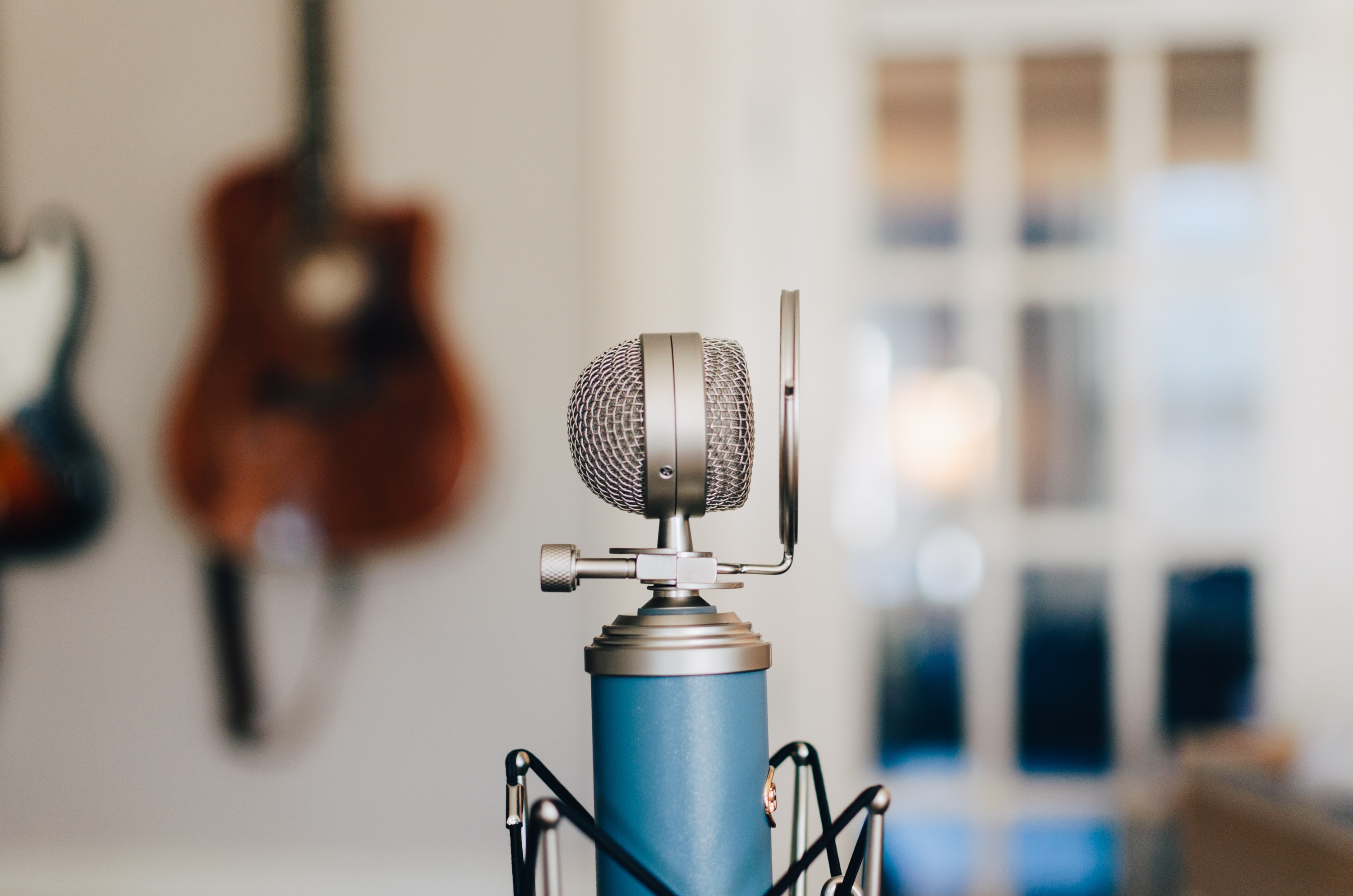By Ali Shaw, Executive Editor
I first started listening to audiobooks in college, when I’d make semimonthly nine-hour road trips to visit my family. I’d roll down the windows for my dog, pop in the first CD, and be mentally transported to the world of a detective investigating a murder, or a family torn by rivalry, or a three-legged dog with more personality than a whole zoo. The hours whirred by, and I often wished my trips could be just a little longer so I could finish the chapter before rolling into my parents’ driveway.

Image courtesy of Unsplash
Flash-forward a couple decades, and audiobooks are making an even bigger impact on book lovers’ lives, mine in particular. With the advent of digital audiobooks that we can just carry around on our cell phones—not to mention smart speakers that will play the audiobook even when you get the urge to listen in the middle of cooking dinner and your hands are covered in pizza dough flour—more readers have become listeners than ever before.
You might have guessed after reading that last line that I would give you some stats, and you’d be right.
According to the Audio Publishers Association’s most recent annual sales report, over the past five years, audiobook sales have surged 181 percent. 2018’s audiobook sales in the United States were 27.5 percent higher than 2017’s stats, but—authors and publishers, I hope you’re reading this part carefully—the increase in new audiobook titles published was only 5.8 percent.
You know what that means, right? It’s time to add your audiobooks to the market! Believe me, listeners are ready for them.
Plus, publishing your first audiobook is probably easier than you imagine. And I am really excited to tell you that as of January 2020—today—I am officially making the leap from audiobook listener to producer by offering audiobook production services through Indigo.
The steps to creating an audiobook are pretty simple:
1. Choose a narrator: This could very well be you. Listeners love nonfiction and memoir titles read by the author. They feel like they’re sitting at your feet, learning from your wisdom. Fiction can also do well when read by the author if you have some drama training—but you don’t have to be a professional actor or be able to switch between voices like the late, great Robin Williams. A couple hours’ of narration coaching is probably all you need to bring your story to life.
2. Prepare: If you’re hiring a narrator, this part is mostly on them, though you’ll want to clarify pronunciations and similar details for them. If you’re narrating yourself, practice reading your book and mark up the pages to give yourself visual cues for where you want to slow down, speed up, have a lower inflection, and so on.
3. Record: We partner with a studio in Portland that has top-of-the-line microphones for every kind of voice, a completely soundproof recording environment, and a highly knowledgeable audio technician to make sure the whole process goes smoothly.
4. Proof, edit, and master: I know those first two words sound like what you went through with your text editing process, but these are different.
An audio proofreader listens to your recording to make sure the audio words match the written words. (You don’t want to end up with an accidental “chocolate chip chookies” in the middle of your book.)
An audio editor does the fine-tuning, making sure the mouth clicks and breaths won’t hurt listeners’ ears, removing the stutters, and smoothing out the spacing between sections. She can even insert a little musical interlude between your section breaks, a lot like those pretty little doodads you had your designer put in the print and ebook versions.
 Mastering the audio makes it match the specs needed to listen on various devices, and it also gives the whole recording that velvety feel so your readers can listen for hours at a time without getting ear fatigue.
Mastering the audio makes it match the specs needed to listen on various devices, and it also gives the whole recording that velvety feel so your readers can listen for hours at a time without getting ear fatigue.
5. Publish: Just as you picked a printer and distributor for your print book, you’ll decide how you want to publish your audiobook so the masses can buy it (or check it out from the library), download it, and listen to it. There are more than thirty mainstream audiobook retailers, so you’ve got options.
I’ve been having a blast these past couple of years learning the ins and outs of audiobook production, and I’d be thrilled to walk you through the process so it’s seamless for you. If you plan to be part of the audiobook surge in 2020 and beyond, I hope to hear from you!
And if your audiobooks are already out or forthcoming, I’d love to add them to my TBL (to be listened) list. Drop a link in a comment below.
Also, be sure to check out Ali’s class “Publishing Paths: Where to Start and How to Finish” happening next month.
 Ali Shaw’s favorite audiobook retailer is Libro.fm, which supports indie bookstores; her favorite headphones are OneOdio studio headphones; and her favorite time to listen to audiobooks is on sunny walks to the transit stop. Her next favorite audiobook could very well be yours.
Ali Shaw’s favorite audiobook retailer is Libro.fm, which supports indie bookstores; her favorite headphones are OneOdio studio headphones; and her favorite time to listen to audiobooks is on sunny walks to the transit stop. Her next favorite audiobook could very well be yours.

Hi Ali, I have the first 9 books in my Shandra Higheagle Mystery Series in audio. I’ve started working on my other mystery series, Gabriel Hawke, with book one out and book two just about ready to be released. You can find all my audiobooks here: https://www.patyjager.net/audio-books/
That’s fantastic, Paty. Congratulations!